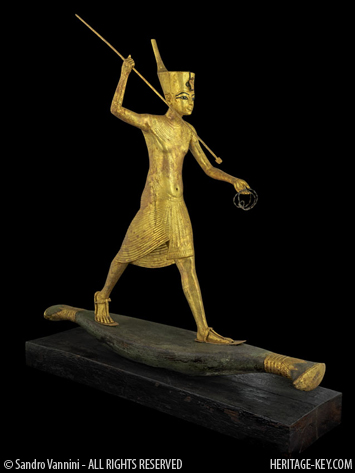 This past a week I interviewed two archaeologists, Dr. Ron Williamson and Professor Neal Ferris, who are at the forefront of trying to solve a problem which has seen artefacts quite literally being tossed into landfills.
This past a week I interviewed two archaeologists, Dr. Ron Williamson and Professor Neal Ferris, who are at the forefront of trying to solve a problem which has seen artefacts quite literally being tossed into landfills.
Ontario, a province larger than the UK and France put together, has a rich archaeological history going back about 12,000 years.
Its a history that includes early hunters who lived alongside mastodons, an agricultural revolution that started 1,500 years ago, and the construction of five hectare villages with 100 meter longhouses.
What its recent history has not seen is an archaeological system capable of storing all the artefacts that have come out of the ground. Unlike its neighbours to the south, Ontario lacks a large system of public repositories.
This lack of storehouses has meant that artefacts end up being kept in terrible conditions, such as basements and private residences. Dr. Williamson writes in an article in The Mark, that, in at least two instances, artefacts have actually been thrown in a landfill.
The Source of the Artefact Baby Boom
The problem started about 30 years ago, when archaeological protection laws were enacted. The legislation said that, before development can take place, a licensed archaeologist must review a site and excavate archaeological remains. Its purpose was to prevent Ontarios history from being mowed over by construction projects. This has meant that there has been an explosion in the amount of excavation done over the past three decades.
Professor Ferris said that, before this legislation was enacted, there were a small number of archaeologists working with museums or universities. Today there is many more, working in a cultural resource management sector, which has sprung up to provide these assessments.
However, there is a problem with this arrangement. Ontario has never built adequate storage facilities and museum space to accommodate these finds. This has meant that archaeologists are being forced to hang onto these artefacts themselves sometimes for decades on end.
Its appalling that the ministry which set up a program wheres theres close to $10 million of archaeology occurring (but) no one has taken any responsibility provincially for the results of that, Dr. Williamson told me.
Theres been very poor follow-through on the management and care of the collections and data, said Professor Ferris.
The ministry in question is the Ontario Ministry of Culture, a junior ministry that oversees archaeology in Ontario. Dr. Williamson said that its status as a junior ministry is a problem as it hinders its ability to get staff and resources. He also says that it appears to hinder decision making.
They dont want to make decisions and take responsibility thats a big-time responsibility, he said.
Dr. Ron Williamson has been pressuring the province, for many years, to open up new repositories that, will not only store artefacts, but make them accessible to researchers and First Nations. He is the founder of Archaeological Services Inc, one of the largest CRM firms in Ontario. He holds a PhD in archaeology and is an adjunct professor at the University of Toronto. Hes given media interviews, written articles, talked to government officials and has even testified before a public inquiry about this problem.
Professor Neal Ferris, of the University of Western Ontario, worked for the Ministry of Culture before becoming a professor. He agrees with Williamson that the situation has reached a crisis point.
He told me how artefacts can be so hard to find – after they come out of the ground – that just tracking them down will qualify as a graduate research project. Their graduate student research project ultimately being something along the lines of well Ive contacted a bunch of archaeologists and Ive found where they found these distinctive artefacts and heres an inventory of them.
Cause for Hope?
Professor Ferris brings a piece of good news. Last Spring he won approval from the Canadian Foundation for Innovation, a non-profit corporation funded by the federal government, to build new facilities in London and Hamilton.
These repositories will not only house artefacts but will digitize them and make them available online.
Were not interested in just being a warehouse for stuff, he said. What we want to actually do is convert these objects into digital information to facilitate research…. All these collections, the report, the catalogues will all be digitized into an information platform.
This, he hopes, will bring an end to the Easter egg hunting grad projects. It wont be about tracking down these things anymore. It will be about value added research on these distinctive artefacts.
Virtual reality will be part of this solution. Well have immersive environment capabilities, he said. We can have you as a researcher put on a pair of glasses and spatially figure out where artefact types are on a site, – an invaluable tool in helping to reconstruct a site.
He said that it wont have enough space for all of Ontarios homeless artefacts, but it will be pretty darn close.
Williamson said that Ontario needs to add funding to this project, or build repositories elsewhere, so that all of Ontarios artefacts have a proper home.



